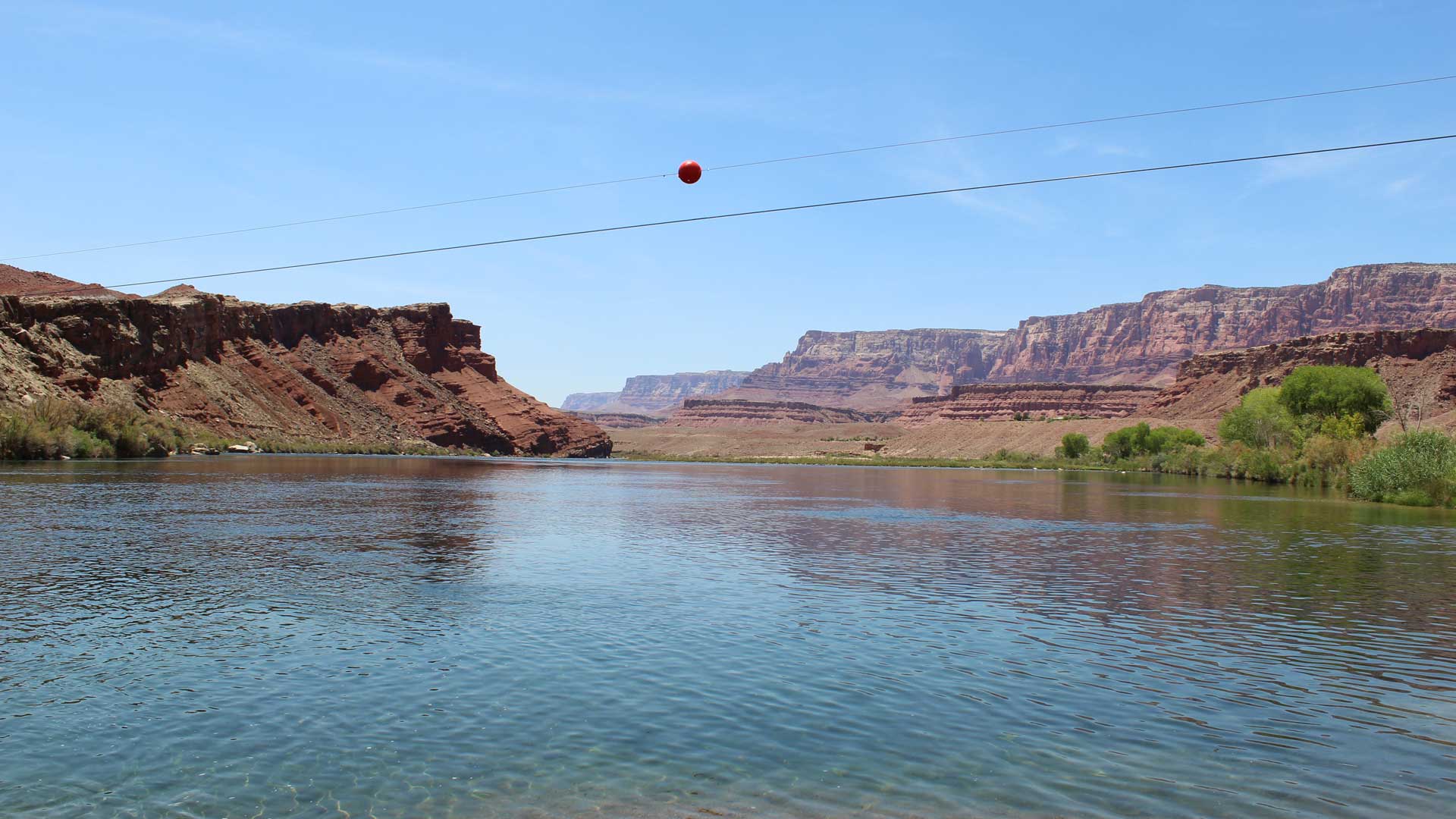 A measurement gage at Lees Ferry in Arizona is the location where Colorado River water deliveries from the Upper Basin are legally accounted.
A measurement gage at Lees Ferry in Arizona is the location where Colorado River water deliveries from the Upper Basin are legally accounted.
One of Colorado’s top water officials says he cannot enforce recent federal demands to start conserving more on the Colorado River.
State engineer Kevin Rein oversees the state’s water rights system. In a meeting with the Colorado River District board on Jul. 19, Rein assured members he would not be mandating conservation among their municipal, industrial and agricultural users. The district covers 15 counties in Western Colorado.
“There is nothing telling me to curtail water rights. There’s nothing telling me that I should encourage people to conserve,” Rein said.
The federal government recently called on the seven states that use the river to curtail their uses by two to four million acre-feet to keep the Colorado River’s largest reservoirs — Lakes Mead and Powell — from declining to dead pool levels and threatening the drinking water supplies for tens of millions of Southwestern residents.
Colorado officials have argued the blame for the river’s supply-demand imbalance rests with California, Arizona, and Nevada. Some doubt the federal government’s authority to demand the states use less water. The 1922 Colorado River Compact, a document that inflated available water within the entire basin, apportioned 7.5 million acre-feet of water to the river’s Upper and Lower Basins, respectively. In recent decades Lower Basin uses have exceeded that amount, while Upper Basin uses have remained below the apportionment.
“We’re way under our allocation of 7.5 million acre-feet a year,” Rein said. “So what does that mean? ‘We need to conserve.’ To me, that means that we don’t change our administration at the state engineer’s office.”
Rein said he has mandated water use reductions in other Colorado watersheds under the compact administration legal process. But the Colorado River has avoided that fate so far, he said. Without a solid legal basis, Rein said his hands are tied.
“If you have a beneficial use for water and you have a right to water and the right is physically and legally available, then I would encourage people to use your water right. It’s a public resource. It’s a property right. It’s part of our economy. It’s part of your livelihood,” Rein said.
“Somebody might tell me I’m wrong someday, but right now, I don’t see a legal basis for asking people to curtail,” Rein said.
Federal officials continue to paint a bleak picture for Colorado River reservoirs without unprecedented amounts of conservation over the next year. The Bureau of Reclamation runs a “Protection Volume Analysis,” which gives an amount of conserved water needed to keep Lake Powell and Lake Mead at specific target levels.
During the same Colorado River District meeting, the Bureau of Reclamation’s Upper Colorado River assistant regional director Katrina Grantz laid out the agency’s rationale for asking for two to four million acre-feet in conservation. She said the cutbacks should come from all corners of the watershed and all sectors of the economy.
“It’s states, it’s tribes, it’s water districts, it’s cities. In order to achieve this, we need to look broadly, and we need to look creatively,” Grantz said.
Colorado River District general manager Andy Mueller said he wanted to know how the federal government was planning to tighten how it accounts for water use in the Lower Basin, including evaporation from reservoirs, a longtime complaint of Upper Basin leaders.
“It is extremely frustrating to see system water utilized for the benefit of the three Lower Basin states and us taking a hit for it. And now we are for the first time, frankly, about to be injured by it,” Mueller said.
Upper Basin leaders have resisted calls for specific amounts of conservation on the Colorado River. In a plan released last week, the four Upper Basin states — Colorado, Wyoming, New Mexico and Utah — instead call for the reinstatement of a conservation program that paid farmers to forgo water supplies, first tested in 2014.
“There’s a lot of mistrust up here,” said board member Marc Catlin, a Republican member of the Colorado House of Representatives. “The idea that we’re going to tell you how much we can save allows [the Lower Basin] to decide what they’ll do. It seems to me that somebody at the Bureau of Reclamation has some goals laid out for the Upper Basin, and we’d like to know.”
A Bureau of Reclamation reservoir forecast in August is set to steepen the existing cutbacks among Lower Basin users. If current projections remain, the Lower Basin will enter a Tier 2 shortage condition for 2023, deepening cuts to users in Arizona, Nevada, and Mexico.
This story is part of ongoing coverage of the Colorado River, produced by KUNC, and supported by the Walton Family Foundation.*

By submitting your comments, you hereby give AZPM the right to post your comments and potentially use them in any other form of media operated by this institution.